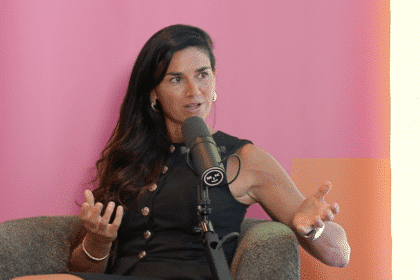Social media has become one of the most important arenas for online video, but considering the vast majority of these videos are user-generated, it’s no longer optional for brands to take part, writes Hamish Brown (pictured below), sales manager for Australia and New Zealand at Brightcove.
It’s no secret that video on social networks is huge. The numbers speak for themselves: according to its Q4 2016 earnings call comments, Facebook is generating at least 100 million hours of video views each day, while Bloomberg reported that Snapchat has more than 10 billion video views in 24 hours alone. Those are dwarfed by the fact that YouTube commands some 50 per cent of social video views.
Social media has become one of the most important arenas for video online. Considering the vast majority of these videos are user-generated, it’s no longer optional for brands to take part.
Those brands that have already spent big on social video as part of their content strategy have seen it pay off significantly. Of the 500 million people watching Facebook videos each day, 16 per cent said they watched branded videos. In a recent global survey on branded video by Brightcove, half of Australians said they had purchased an item directly or indirectly as a result of a branded video on social media.
These changes in online shopping and social behaviour have made a fundamental impact on how marketers can take advantage of branded social video to drive and convert sales, but it’s not enough to simply post a video and share it across various social channels. The most successful marketers know a thoughtful publishing strategy is essential to making social video stand out. Distribution of content is more important than ever, but a marketer can no longer rely solely on brand loyalty or awareness to drive video views, let alone convert sales.
Conquering the newsfeed
Nearly half (47 per cent) of Australian respondents in the Brightcove survey said they most watched branded videos in their newsfeeds, meaning these are usually discovered by chance either through programmatic advertising or previous affiliation with the brand. This means newsfeeds present a crucial opportunity to engage viewers.
A first step to conquering the newsfeed is to recognise that each social network handles video differently. For example, Facebook and Twitter’s native video players automatically start playing videos without sound when someone scrolls over the video in their feed. Though Facebook has announced plans to change this on some versions of its platform, such as mobile, it makes for a fundamental departure from how videos need to be developed.
Marketers have to carefully consider how to capture attention visually as soon as the video begins in order to hook an audience, and know the nuances of the social platform they’re using to ensure they are catering to those audiences in an engaging way. Design video with the right screen in mind, consider visual signals like captions and brand cues that get your point across as soon as possible, and aim at generating an instant emotional response.
Standing out in a sea of content
Between user-generated content, algorithmic newsfeeds and other brands, competition for viewer attention has never been more fierce. Not only are unknowns competing amongst each other for eyeballs, they are also up against those with millions in marketing budgets and the big names.
Apple’s ‘Distractingly good’ video campaign, which saw the likes of Taylor Swift go flying off a treadmill, amassed over 20 million views on Instagram and Facebook alone. An up-and-coming consumer tech brand is unlikely to do the same.
https://www.youtube.com/watch?v=egHjkeiqjrA
So, in what seems like a sea of content, how can brands differentiate themselves from their competition and genuinely engage audiences?
Brands need to be aware of how they position their content. Audiences are intelligent and will quickly pick up on content that is irrelevant, overly promotional and intrusive. Brands should focus on telling their story or introducing their products in a way that is as genuinely engaging and niche as their audiences are.
To that end, uploading repurposed content or popping a TV commercial on a Facebook page won’t yield results. In fact, social networks reward and prioritise native video experiences and build out more functionality around mobile viewing and analytics for them. There’s no doubt it’s in a brand’s best interest to customise across each channel for higher engagement.
Expectations and engagement
In the same Brightcove survey, consumers said they were more likely to engage with videos that provided the right level of information and were relevant to their interests. This means that video content on social shouldn’t be treated with the same mass medium spattering that the advertising industry has strived for over the past 60 years.
Videos on social media need to be targeted, relevant and entertaining, or informational to the specific target audiences that brand is trying to reach – without those aspects, the videos are likely to have little impact. Sportsbet is a great example of how to get this right. The brand creates a connection with audiences by positioning itself not as a gambling company, but as an entertainment company that features sports content. As a result, Sportsbet experiences high engagement and its social content performs particularly well.
Furthermore, audiences already have an expectation of what kind of content they’ll see on each social media network, and it’s important to cater to these views to make a splash. One way to optimise video assets to meet these expectations is to create specific content and publishing guidelines for each channel, taking into consideration unique audience demographics and social video consumption preferences.
Because the editorial principles vary so much across social networks, the mission statement for Twitter should differ from Facebook or YouTube for maximised results
Thankfully, Australians are among the highest engaged video viewers, with 83 per cent of respondents to Brightcove’s survey saying they engaged with brands on social media. But without the right video content strategy in place, that time spent making funny videos in search of virality may be best spent elsewhere.









